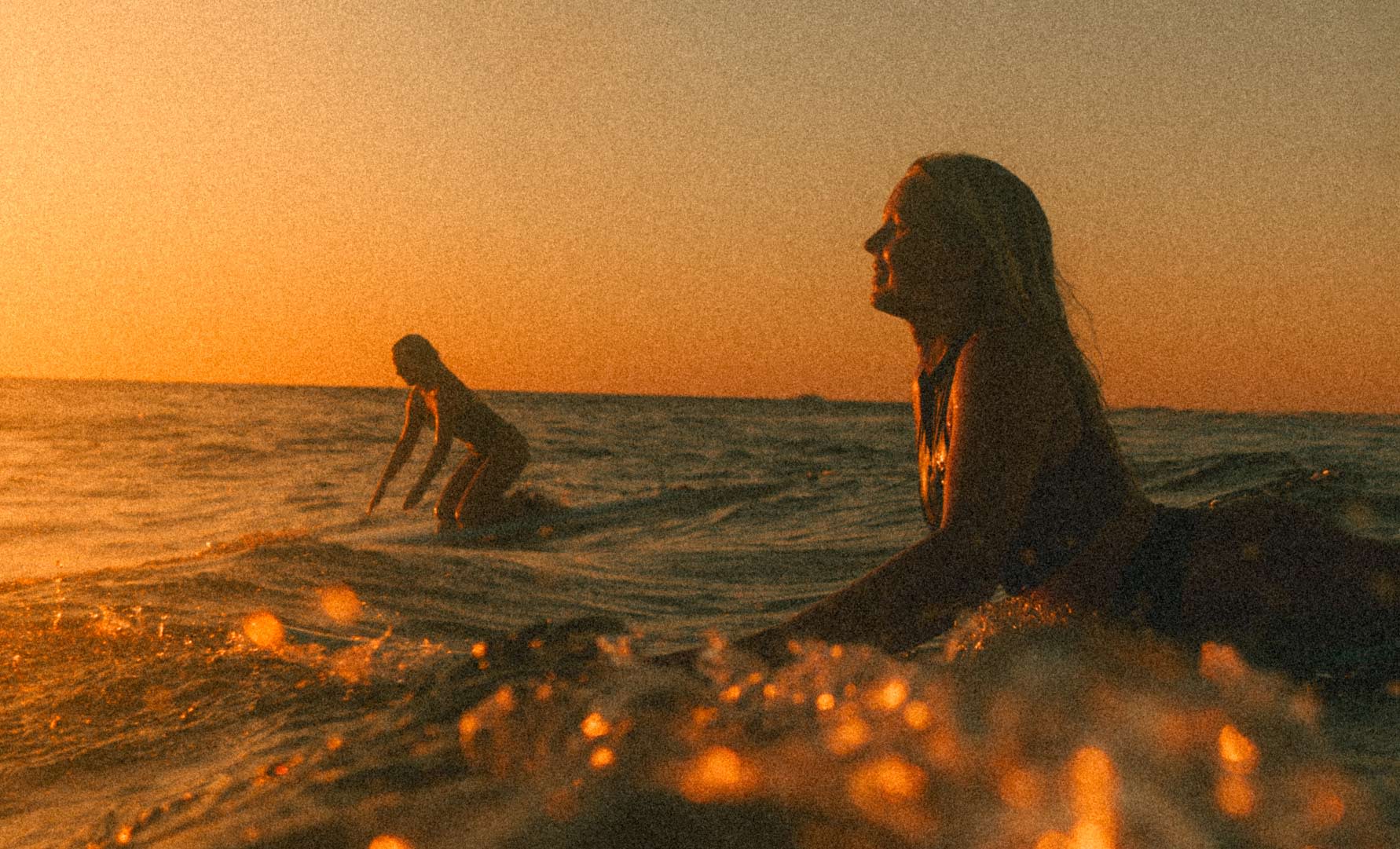
20 tips for beginner surfers: Learn to surf step by step
February 3, 2025So, you're ready to hit the waves and learn how to surf? Whether you're a total newbie or you've already dipped your toes in the surf, it can be a little daunting to get started. But don’t worry, we've got your back with 20 tips to help you feel more confident and have more fun out there!
Surfing isn't just about standing on a board and riding a wave – it's about understanding the ocean, being mindful of the surf community, and, most importantly, learning to enjoy the ride. From choosing the right gear to finding beginner-friendly spots, these tips will give you the boost you need to get the most out of your surf sessions. Let’s dive in!
Learn how to surf
At some point, you might try teaching yourself to surf, especially if you're naturally athletic and motivated. But learning through a surf school or surf camp is a much better choice because the ocean can be unpredictable and powerful. Knowing how to read the water is essential for staying safe and avoiding accidents.
There are strong currents that can pull you out to sea, waves that seem surfable but aren’t, and important unwritten rules when it comes to sharing the lineup with local surfers. Plus, surfing is about more than just riding waves – it’s about community. Learning with an instructor and other beginners is not only safer but way more fun than trying to piece together everything you've watched on YouTube.
Here are 20 beginner surf tips to help you feel confident in the ocean, one step at the time!
1) Find Surf Equipment That Suits You

Finding surf equipment is unlike finding other sports equipment, where you can walk into the shop and get whatever intrigues you and matches your style. Of course, you can go and buy some of your surf gear like wetsuits, booties, hoodies, gloves and wax.
But when it comes to your surfboard and related gear, it’s crucial to get something that suits you and your abilities. Therefore, everyone has a different need in board size and volume of the board. Related gear like fins, leash and the protective bag needs to match the board. It is super important to test different boards before you buy equipment. Only with the right gear, you will catch as many waves as possible resulting in progress. Usually, you learn on a 7’6 or 8’0-footboard.
The boards used for beginners in surf schools and camps are made of a foam-like material, so you don’t have to be afraid to injure yourself or others. Lapoint gives you the unique opportunity to try a lot of different boards while learning to surf with us. This is an amazing opportunity not many surfers get – especially when starting out.
A lot of surfers find their preferred style of surfing after a while. Some like to be fast, some like to cruise, and others like the more elegant way of surfing called longboarding. Nevertheless, it is great to start with a board with lots of volume suiting your weight, height and strength to make you float on the surface of the water.
This also makes paddling into waves easier and excuses little mistakes when standing up on your board.
2) Finding A Beginner-Friendly Spot That Isn’t Crowded

Every beach is unique. Every coastline is tilted at a slightly different angle. Every ocean floor is covered by a differently formed reef and sandbanks at beach breaks are changing every day. Some spots have barreling waves, while others are a little more sheltered. Therefore, it is good to find a beach that is beginner-friendly.
The ideal is small but powerful waves or waves breaking further out and rolling in as whitewash. Beaches with low currents are also good to look out for because you will have less of a struggle to stay at the same place in the water. There are apps and websites you will find this information on (like Surfline). You can also look at local surf guides.
3) Check The Tides
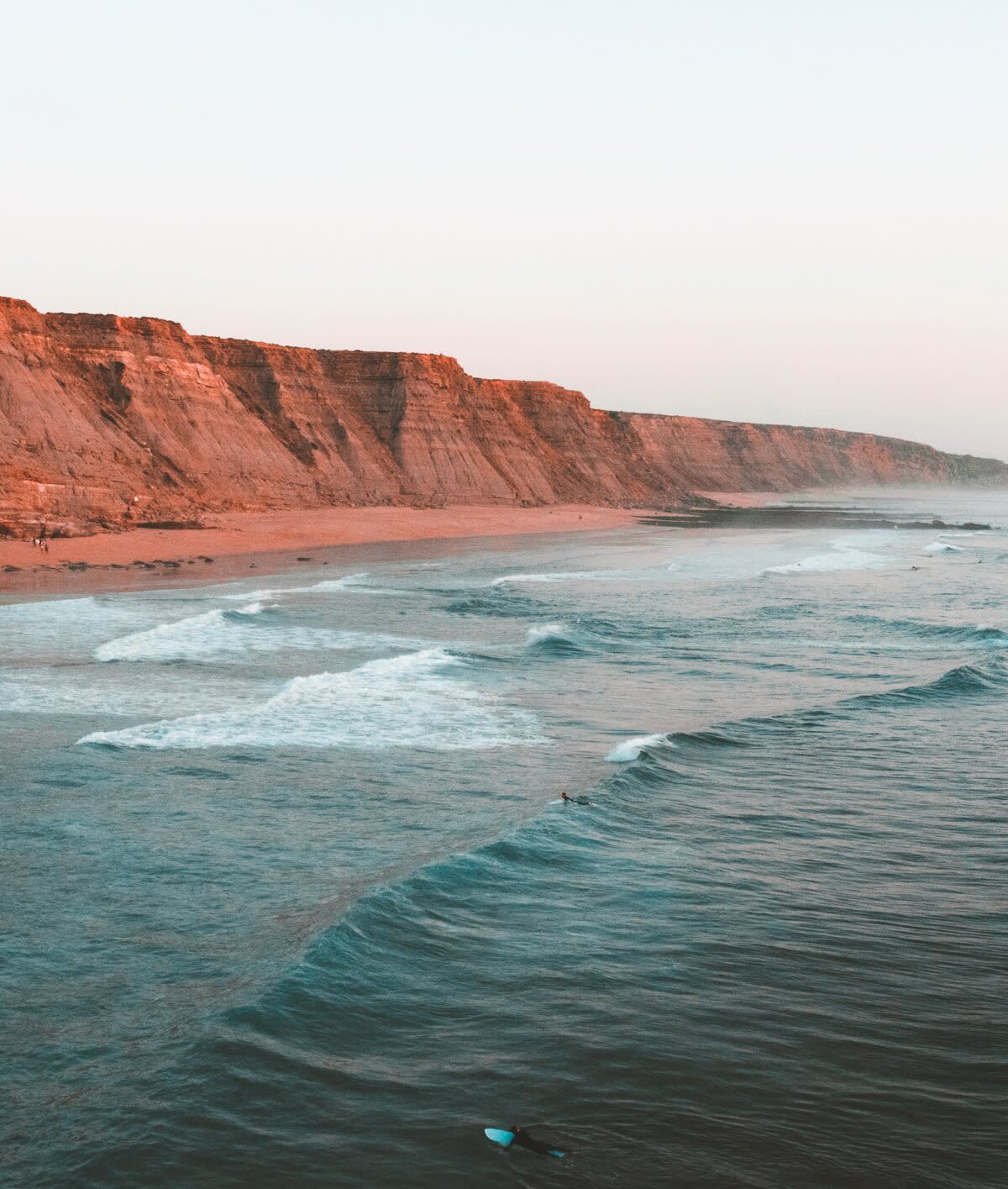
As you probably remember from geography class, there is high tides and low tides in the ocean. These are affected by the moon. We as surfers can use the tides because waves break over parts of the ocean floor further away from the shore at low tide and further on the shore at high tide.
Try and ask around if the sport you are intending to surf is easier or better to surf on low or high tide. For example, it could be less distance to paddle out on a spot at high tide or waves could break nicer and longer at low tide.
4) Remember To Read The Ocean And Its Currents

Take your time and watch the ocean. Maybe sit down at the beach for a while. Try and figure out where the rip current is. It takes you out to the lineup alongside the breaking waves. Figure out which direction the longshore currents go that travel parallel along the beach.
Figure out a non-moving item at the beach which you will focus on when in the water, to avoid being pushed by longshore currents without noticing.
What is a beginner surfer called?
A beginner surfer is often called a "kook"—it may not be the most flattering nickname, but don’t worry, we’ve all been there! Just follow these surf beginner tips, respect the lineup, and have fun!
How do beginners start surfing?
The best way to start? Take a lesson! Learning how to surf for beginners is all about practicing pop-ups, paddling, and reading waves. Stay patient and enjoy the ride.
What is considered a beginner surfer?
If you’re still working on catching unbroken waves, perfecting your stance, and figuring out wave priority, you’re in the surfing for beginners stage. Keep going—you’ll level up in no time!
5) Remember The Rules Of The Line-Up

No beginner wants to get tangled with the big boys and girls out there. You will probably laugh at the imagination but there are people shouting at each other in the water and paddling to the beach to physically fight each other over a wave at some places. For people not involved it is a fun cinematic spectacle but let’s not forget that it is totally unnecessary and avoidable when behaving right.
Remember how to behave in the ocean and at the line-up and also remember who has the right to go and be friendly to avoid conflicts when mistakes happen.
VIDEO
The surf etiquette | How to surf

6 essential surf etiquette rules:
1. Priority goes to the surfer closest to the peak: The surfer closest to where the wave starts breaking has the right of way.
2. Don’t drop in: If someone is already riding a wave, don’t paddle in front of them or try to take the wave. This is a big no-no.
3. Paddle wide: When paddling out, avoid the path of surfers riding waves, go around to avoid crossing the line of others.
4. Respect the locals: If you're surfing at a new spot, respect the locals who surf there regularly. Be polite, observe, and wait your turn.
5. Don’t ditch your board: Hold onto your board when a wave approaches. Letting it go can be dangerous for others in the water.
6. Communicate: If you're going for the same wave as someone else, call out your intentions to avoid collisions.
6) Listen To Your Body
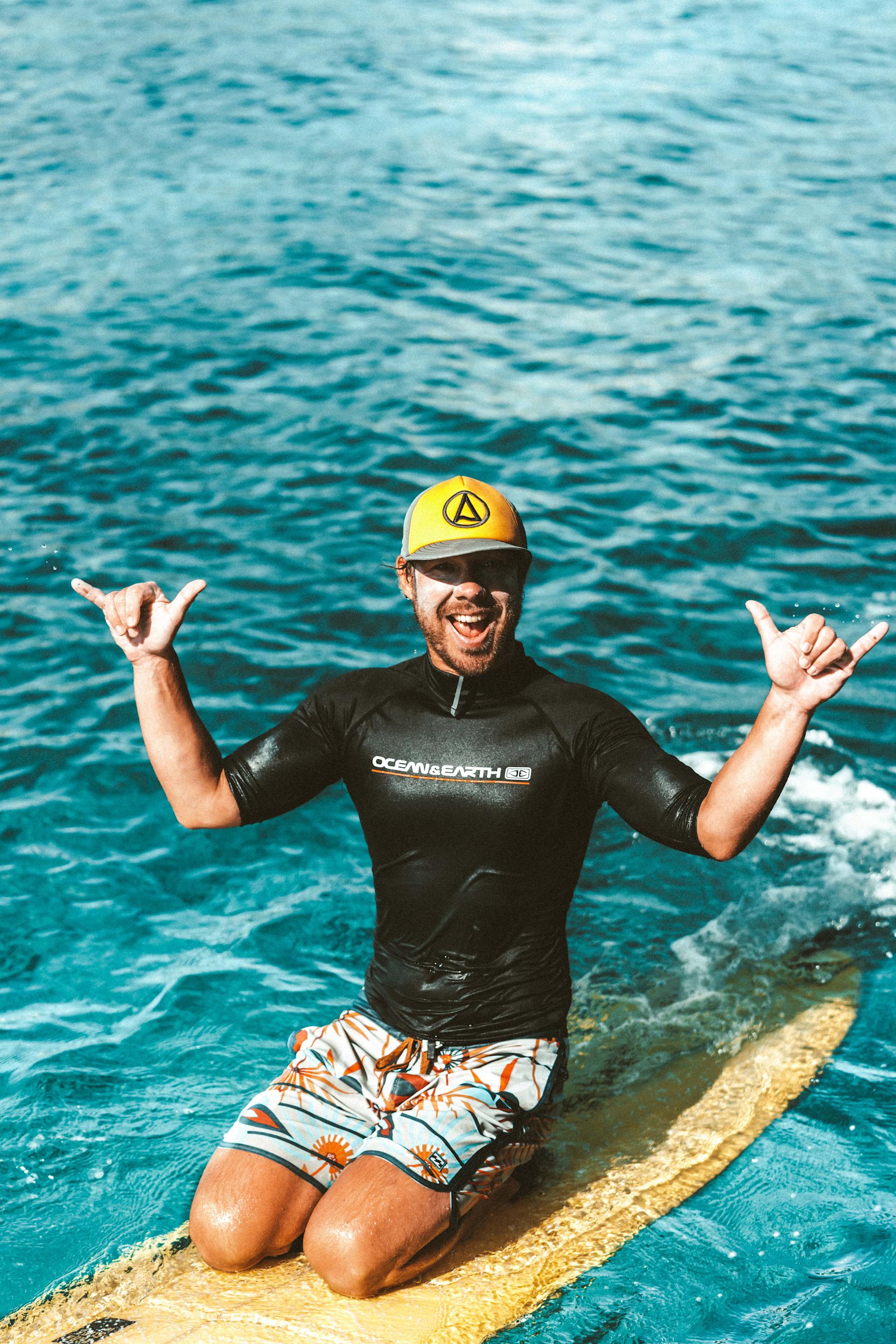
Great adrenaline and serotonin levels can be a real thing in surfing so let’s all try and keep it slow. Especially with that breakfast coffee kicking in we might take risks that go out of control. As mentioned before: the ocean is stronger than you. Take your time, listen to your body and stay safe. Start small and up the game slowly.
7) How To Wax Your Board
We’ve all been there. Buying our first wax while not quite sure how much to put on or where exactly. Here are two tips:
Foam board: you don’t necessarily need to put wax on but if you feel like it needs a bit, try and see where your feet are placed and put a bit on those parts.
Shortboards: put a good amount of wax on. You can try and make a grid pattern on the surface to increase the grip.
Note: You don’t need to wax your footpad if you have one. Some people do so but those are the ones that are performing aerials.
8) Always Surf With A Leash
The leash is an essential item when surfing. You will probably see some ‘experienced’ surfers go without one but swimming after a board and risking it crashing uncontrolled into rocks or another surfer does kill the vibe.
9) Remember Your Sweet Spot
This is important to avoid nosediving and to find balance when paddling. It takes some practice, especially when on a new board.
10) Practice Your Take Off/ Pop-Up On Land
The basic pop-up/take-off movements aren’t something only beginner practice. Even pro surfers are still working on a perfect pop-up. Kind of like a sun salutation in yoga. Beginners do it, and the gurus too. You want to get to the stage where you don’t need to think of your movement. Your body then just flows so you can focus on the wave.
VIDEO
How to pop up on a surfboard | How to surf
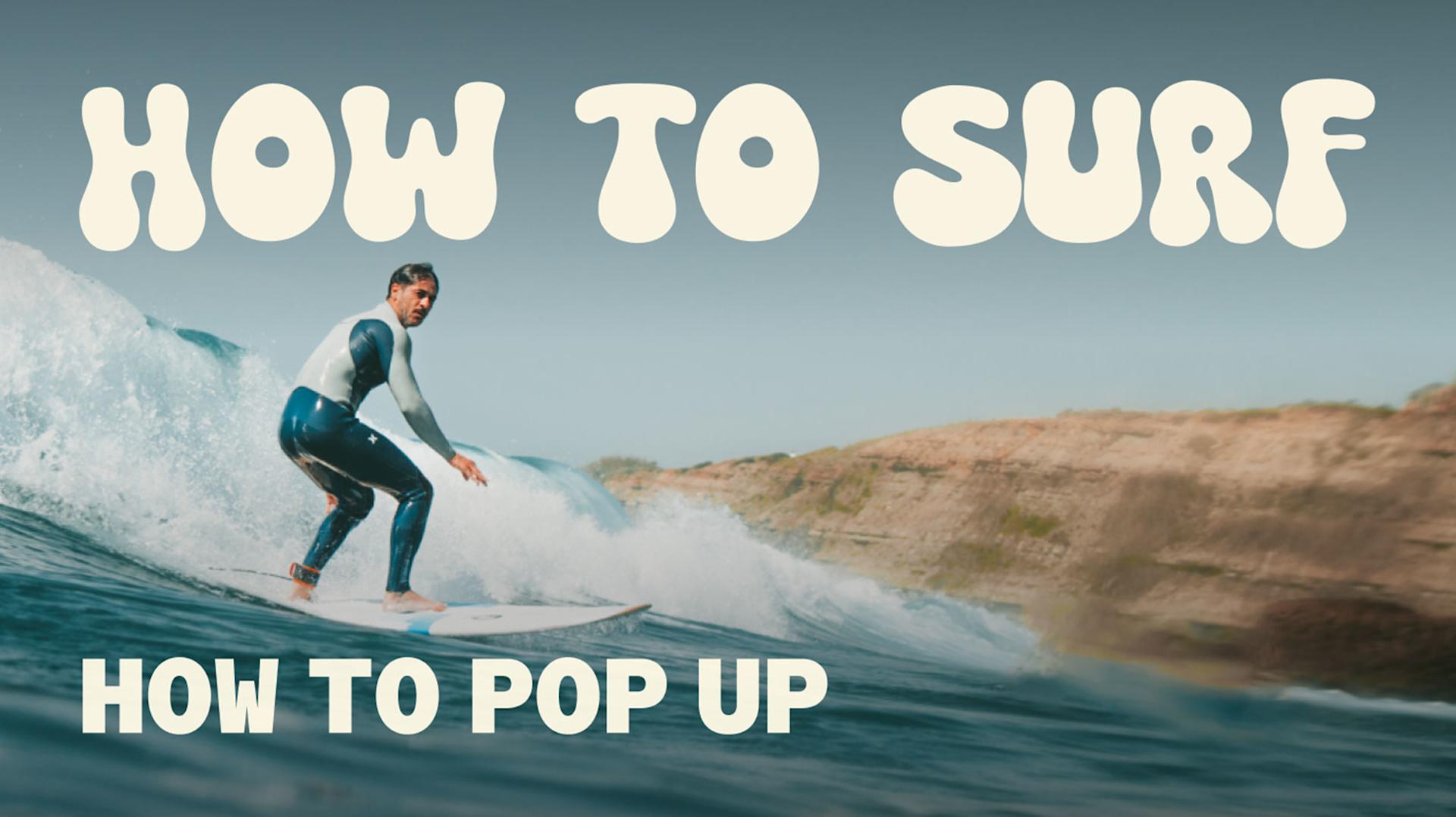
Why you should learn how to surf with Lapoint

After 15 years, 100.000 something thrilled guests and maybe about 1 million ridden waves, we know what real stoke looks like. We’ve shared our passion for surfing since 2005, and with certified instructors & customized courses at some of the world’s greatest surf destinations, we’re here to give you the best surf experience possible!
11) Stretch And Warm-Up

Most countries in Europe have warm air temperatures but refreshing water temperatures. Therefore, it is important to prepare your body for it. Bring your heart rate up with a few cardio exercises like jumping jacks or running. Try and stretch your arms and legs to prepare for movements. Nothing is worse than tearing a muscle on the first day of your surf vacation.
A great combination with surfing is also to practice yoga!
12) Practice Sitting On Your Board

This might sound strange but sitting on your board in a way that you can react fast when seeing a suitable wave is the key to catching any. Try and find your balance. Practice going from sitting to lying down and figure out which side makes it easiest for you to look back and check for oncoming waves
13) How To Paddle Out
Beach breaks: try and spot the rip current that brings you out to the line-up, paddle strong and do turtle rolls through whitewash until you’re out.
Point breaks: Paddle out alongside the breaking waves and whitewash. Surfers often prefer point breaks because the waves tend to break in a more predictable spot, allowing you to paddle out next to them rather than through them. Always paddle around the waves, as going through the whitewash can put you in the way of surfers already riding a wave.
14) Practice the turtle roll
You probably seen boards flying up in the air sometimes and for sure yours will too when wiping out. But when paddling out to the line-up you should always try and do a turtle roll instead of ditching your board and diving under the wave by yourself (AKA the chicken dive). You are able to learn this skill in intermediate surf lessons, which is one of the reasons why intermediate lessons are so important.
At Lapoint, we have a 3-level system for surf lessons to ensure everyone’s needs are met. Depending on your progress you will have intermediate lessons and paddle out to the line-up with an instructor practising the turtle-roll.
15) Practice Wiping Out
There is a right and a wrong when falling off your board. It might look like people give up on everything when wiping out, but there are techniques to it. These make sure that you fall as shallow into the ocean as possible to minimise your risk of injury through the ocean floor.
These techniques also protect your head and are taught at Lapoint camps by our professional surf instructors.
16) Duck Diving

In the future, you might want to step up your game by switching to a low volume board. Then you will be able to perform duck dives. Low volume means the board is less floaty and you’re able to push it under the oncoming wave.
Note: to protect your nose and forehead, don’t even try and duck dive with a big board. It just doesn’t go down.
What size waves are good for beginner surfers?
As a beginner you'll surf white water waves, preferably between 1 to 3 feet (knee to waist-high). Smaller waves make it easier to practice pop-ups and turns while keeping wipeouts fun—not scary!
Is 25 too old to start surfing?
Never! Surfing is for everyone, no matter your age.
17) Work On Your Paddling Technique
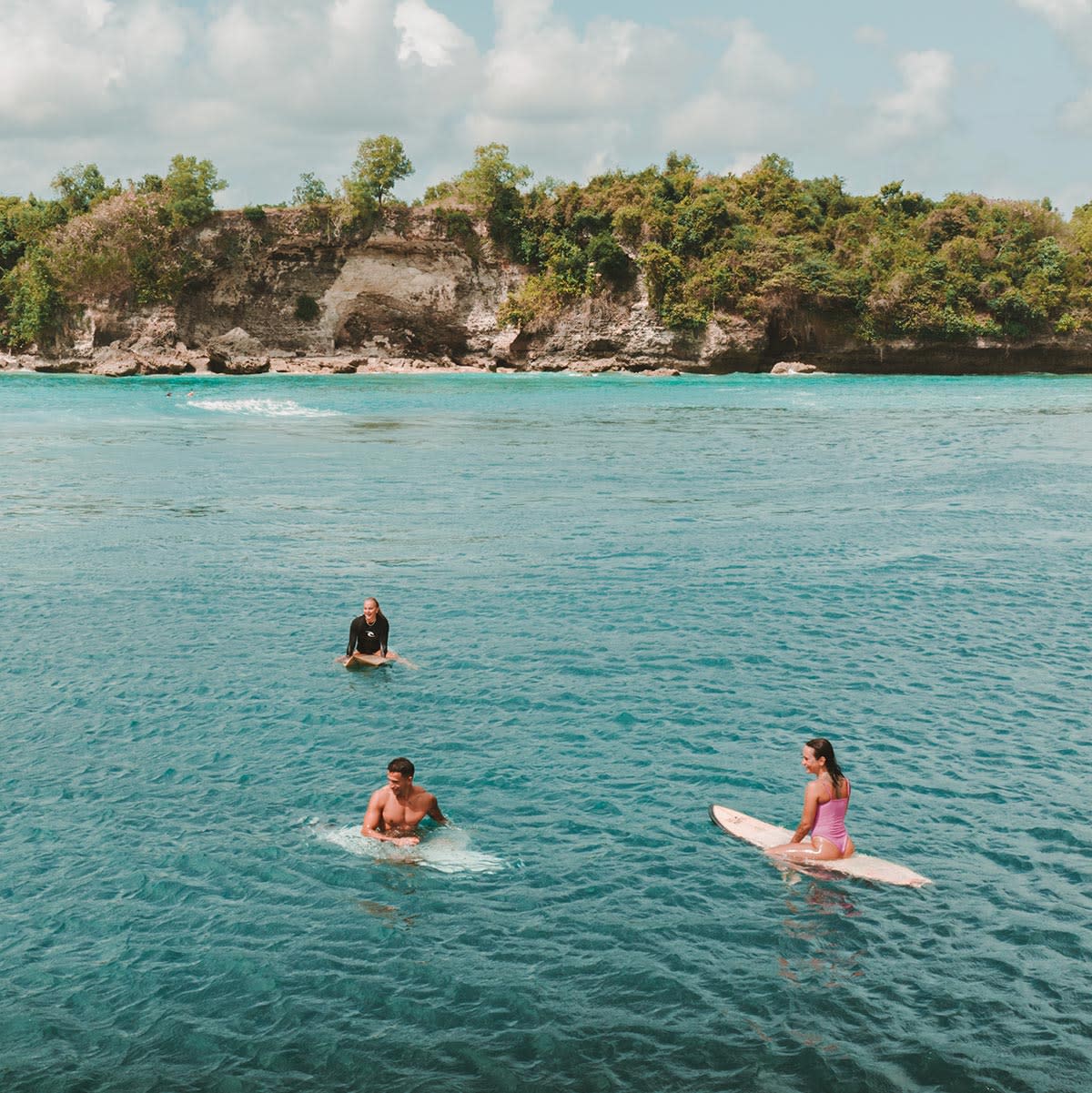
Paddling is probably the most tedious thing in surfing. But many forget that things get better with practice. Your muscles (also called surf wings) get stronger over time and what seemed like a hurdle ends up being easy. Practice makes perfect!
Small tip: Take an extra paddle when going for a wave. A common reason for beginner surfers not catching a wave is that one more stroke is needed to actually be gliding with the wave.
18) Used Failure To Learn

This goes out to all of us. We should never be too hard on ourselves. There is no failure, just lessons to learn. Nothing is bad or wrong. It’s all experiences. As said above: practice makes perfect!
19) Keep Moving In The Water

Paddle to the place where the waves break. This is especially important at beach breaks. Waves are breaking everywhere, and sandbanks are moving all the time.
It might be a bit exhausting at the beginning but that’s where you will not only get better at paddling but also catch much more waves than someone just sitting around waiting.
Note: while doing so, don’t forget the rules of the line-up.
20) Have Fun!

Always keep in mind that even the greatest surfers have once started. Don’t be hard on yourself for taking time. Get up, get out and have the most fun possible. Even wiping out weirdly can be fun and lead to great chats with your friends after the surf!
NEWSLETTER
Stay up to date, sign up for our newsletter

Beatrice Lindfors
About the author: My name is Beatrice, but Bea for short, and I’ve been a writer and content creator for Lapoint since 2022. My life revolves around my laptop and backpack as I travel the world (always with a stop in Ericeira; the camp vibe there and the Portuguese sunset have my heart). Life goal? Visit every country.
Obsession? The Sri Lanka waves, the Atlantic Ocean and tracking down the best coffee –whichever my current location is.

